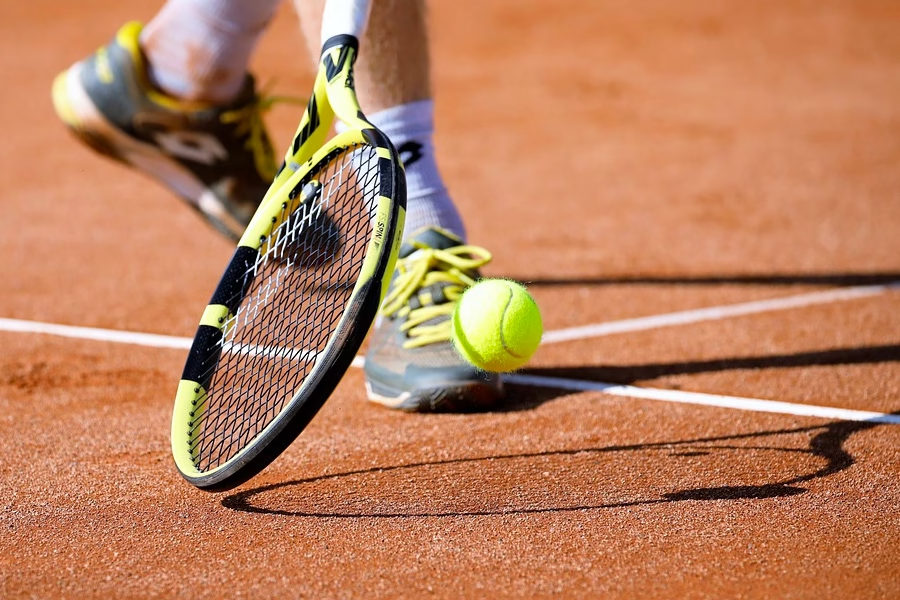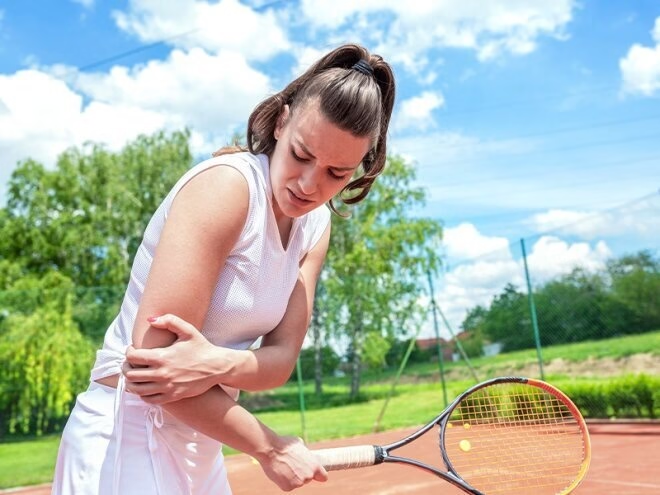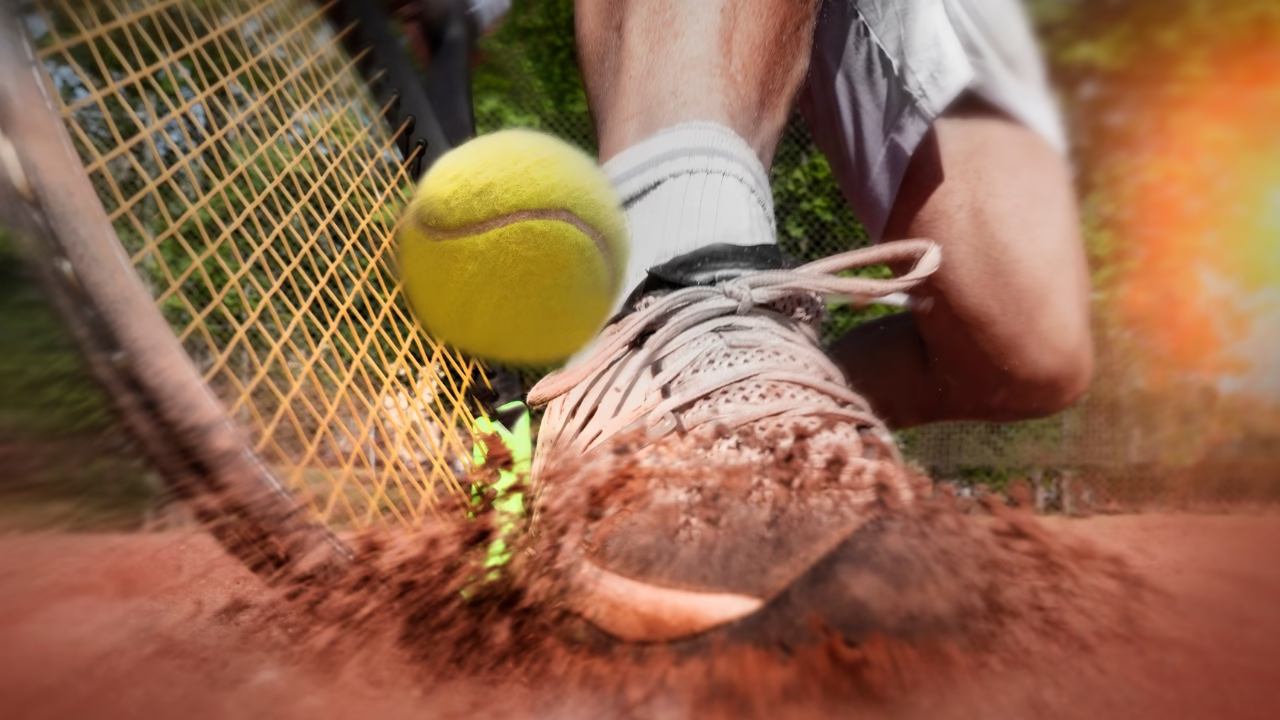
ACE Sciences ACE Flex Review—My Honest Results After 30 Days
Why ACE Sciences ACE Flex? There’s a moment in tennis that changes everything, and it’s not when the scoreboard flashes

If you’re 30+ and facing burning in your arm or your elbow flares up every time you swing your racket, this is your wake-up call. Many Tennis players in their 30s face this, and yep, I’ve also been there, feeling burning in the forearm, stabbing pain in the elbow, and a weak grip.
They call it tennis elbow, but let’s be real, it feels more like “can’t-play-anymore elbow.” Especially after 30, when recovery slows down and pain sticks around longer than it used to.
But here’s the good news: you can fix it easily, and that’s not a gimmick.
I did it without surgery, painkillers, or giving up tennis. And today, I’ll show you exactly how. So, whether you’re an amateur who plays for fun or a serious player chasing goals, this article is for you.
But before diving deep, let’s first understand what tennis elbow is.
Tennis elbow (aka lateral epicondylitis) is a common injury where the tendons in your elbow get inflamed, mostly from overuse. It usually starts with a little soreness on the outside of your elbow. Then one day, you can’t even twist a water bottle without wincing.
What it feels like:
It’s incredibly common in tennis players, especially after 30, when recovery slows down and muscle tension builds faster than it heals.
And it hits harder after 30.
Why? Because your body doesn’t bounce back the way it did in your twenties. Your muscles and joints take longer to heal, and recovery becomes a thing you can’t ignore anymore.
When I first noticed the pain, I shrugged it off by telling myself that “It’s probably just sore.” So I did what most of us do:
However, that made everything worse because I was treating the symptom, not the source. And all it did was delay my recovery and create new problems in my wrist and shoulder.
But then I stopped pushing through pain and started listening to my body.
One day after practice, I couldn’t even lift my coffee cup, and that was it. I knew I had to make a change, not just to get better but to stay better.
So I did the one thing most athletes hate doing: I slowed down. Besides this, I stopped guessing and started doing the right things.
I talked to trainers. I spoke with a sports physio. I even started researching clinical studies and rebuilt my recovery plan from the ground up.
1. Rest… But Not Total Shutdown
Yes, I rested. But I didn’t just lie in bed for two weeks. Instead, I gave my elbow time to calm down while doing active recovery, like:
2. Stretching & Strengthening
Tennis elbow is often caused by tight, weak muscles. So, I did daily wrist stretches, forearm flexor/extensor routines, and band exercises. It only took 10–15 minutes a day. But it made a huge difference. You can also try these:
Wrist Flexor Stretch
Wrist Extensor Stretch
Towel Twist
Isometric Grip Hold
3. Cold and Heat Therapy
Cold packs helped reduce the swelling, while heat therapy helped improve blood flow and loosen tight muscles. A combo of both worked better than either one alone.
4. Massage and Myofascial Release
Using a tennis ball and a massage gun, I targeted tight muscles and fascia around the elbow and forearm.
Total game changer.
5. Sleep and Water—Don’t Skip These
Your body heals when you sleep, and water helps your muscles and tendons function better. After learning this, I started drinking 2.5 liters a day and made sure I got at least 8 hours of solid sleep every night.
Here’s something I wish someone had told me earlier:
You can’t heal fully if your body is missing key nutrients. Especially when you are 30 or above, you need more support. That’s why I started using ACE Flex, a science-backed supplement developed by Andy, a tennis coach and medical pioneer who understood this problem inside and out.
With years of on-court experience and medical training, Andy built a formula specifically for tennis athletes suffering from joint pain and inflammation. He didn’t just want to treat symptoms, he wanted to solve the problem and bring real relief to players who love the game.
Formulated by someone who understood the problem both as a tennis coach and a doctor in training, ACE Flex is not your generic gym supplement. It is your all-in-one solution for joint protection and pain relief
What’s Inside:
Available now at acescience.com.
Unlike mainstream joint pills, this one’s clean, effective, and designed especially for tennis recovery. However, you still need to be cautious when recovering from tennis elbow.
If you’re dealing with tennis elbow, please stop doing these things now:
Playing through pain
Playing through pain wouldn’t prove anything. In fact, keeping going will make your arm worse.
Long, freezing ice baths
A quick 10-minute cold pack is fine. But soaking for too long will mess with your natural healing response.
Skipping recovery
Recovery is training. Don’t treat it as optional. Therefore, stretch, rest, use the roller, and take the supplements. Do it all, even when you feel “better.”
Energy drinks & sugary supplements
Energy drinks and sugary supplements are not healthy at all. They will give you fake energy but do nothing for actual healing.
Relying on painkillers
Painkillers can hide pain but delay healing, which can be harmful long-term.
Recovery Is a Mindset—Not Just a Routine
I used to think recovery was just something you do after a match, but it’s not. In fact, recovery is a part of your full performance strategy. So, if you’re serious about staying on the court, recovery has to be part of your lifestyle.
Especially if you are over 30, recovery isn’t optional. It’s how you:
If you’re over 30 and dealing with tennis elbow, I see you. It’s frustrating. It’s painful. And it feels like you’re losing your grip—literally. But you’re not done. Not even close. I recovered from the same position. And if I can, so can you.
So, take it seriously, do the little things, and support your body with the right steps, supplements, and mindset. With these tools, you’ll be back on court feeling better, moving easier, and loving the game again.

Why ACE Sciences ACE Flex? There’s a moment in tennis that changes everything, and it’s not when the scoreboard flashes

Tennis in 2025 Is Faster, Tougher—and Smarter Tennis has evolved. Matches are longer. Players are stronger. And the pressure to